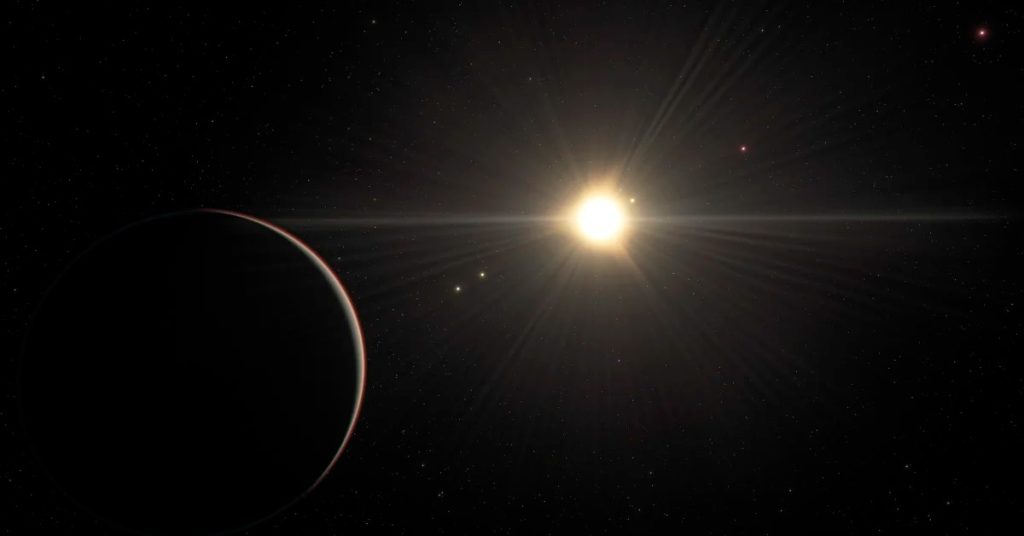An international scientific team, led by the Instituto Astrofísica do Espaco (IA) in Portugal and in which the Spanish Institute of Astrophysics of the Canary Islands (IAC) participates, has confirmed the discovery of five exoplanets in the same planetary system, two of them similar to Mercury.
It’s a system Three from super-Earth and two from super-mercury About the cold star HD 23472, the IAC said in a statement, in which Susanna Barros, a researcher at the Institute of Astrophysics and Space Sciences (IA), who led the study, indicated that they want to monitor this planetary system to determine its characteristics. Formation of minor planets.
Specifically, they wanted to study whether the existence of the atmosphere could be related to the evaporation of its outer layers due to the star’s irradiation.
But they discovered, “surprisingly,” that this system consists of three super-Earths with a large atmosphere, and two giant horns, which are the closest planets to the star, he points out.
Of the five planets of this system, three have a mass less than the mass of Earth The lightest exoplanet whose mass has been measured by the radial velocity method.
This technology detects slight differences in a star’s line-of-sight velocity due to motion caused by a planet orbiting it.
This discovery was made possible by the high resolution of the ESPRESSO spectrometer, installed on the Very Large Telescope (VLT), of the European Southern Observatory (ESO), in Chile.

As explained by the IAC, super-Earth and super-Mercury are analogues of higher mass than Earth and Mercury according to their composition, and differ in that super-Mercury has a higher iron content, especially in its core.
These types of exoplanets are very rare, and in fact only eight are known, including the two newly discovered.in the statement.
Mercury is one of the densest planets in the solar system, and it is not known why it has a relatively larger and more massive core than the cores of Earth and other planets.
The common belief is that an object of such dimensions has affected the planet and removed most of its original atmosphere.
Another theory says that because Mercury is the hottest planet, its higher temperature may have evaporated part of its mantle.
Discover other dense planets, similar to Mercury, around other stars key code To understand the composition of this type of object, explained the IAC.
He adds that specifically finding two centuries of Mercury in the same planetary system, rather than one, It provides scientists with a revealing picture.

“For the first time, using the ESPRESSO spectrometer, we have detected a system composed of two superoxides of Mercury, which helps us understand how these planets formed,” said Alejandro Suarez, an IAC researcher and co-author of the study.
He said that the chance of a large impact of the formation of super-Hg is extremely remote, so two large impacts in the same system seem unlikely.
To understand how these two supernodes formed, it will be necessary to continue characterizing the formation of these planets,” commented Junay Gonzalez, researcher at IAC and co-author of the study.
“The future Extremely Large Telescope (ELT) and its first generation high-resolution spectrometer, ANDES, will for the first time provide the sensitivity and resolution needed to probe its surface composition and potential atmosphere, if it has one,” he emphasized.
For the research team, this is just the first step towards their ultimate goal: to find another Earth.
The presence of the atmosphere will allow us to know the formation and evolution of the planetary system and also have implications for the habitability of planetsBarros indicated that they would like to extend this type of study to planets with longer periods and with more favorable temperatures.
(With information from EFE)
Read on:

“Proud web fanatic. Subtly charming twitter geek. Reader. Internet trailblazer. Music buff.”


:quality(85)/cloudfront-us-east-1.images.arcpublishing.com/infobae/NP5NEZXMZFGNLBHNEQJHPJVMKM.jpg)
:quality(85)/cloudfront-us-east-1.images.arcpublishing.com/infobae/M7XCYNL6P5FQZAB33N6QXI4QTA.jpg)



More Stories
NASA has regained contact with Voyager 1, the spacecraft farthest from Earth
These are the South American countries that will be able to see meteor showers on April 21 – Enséñame de Ciencia
How to record a video call on WhatsApp